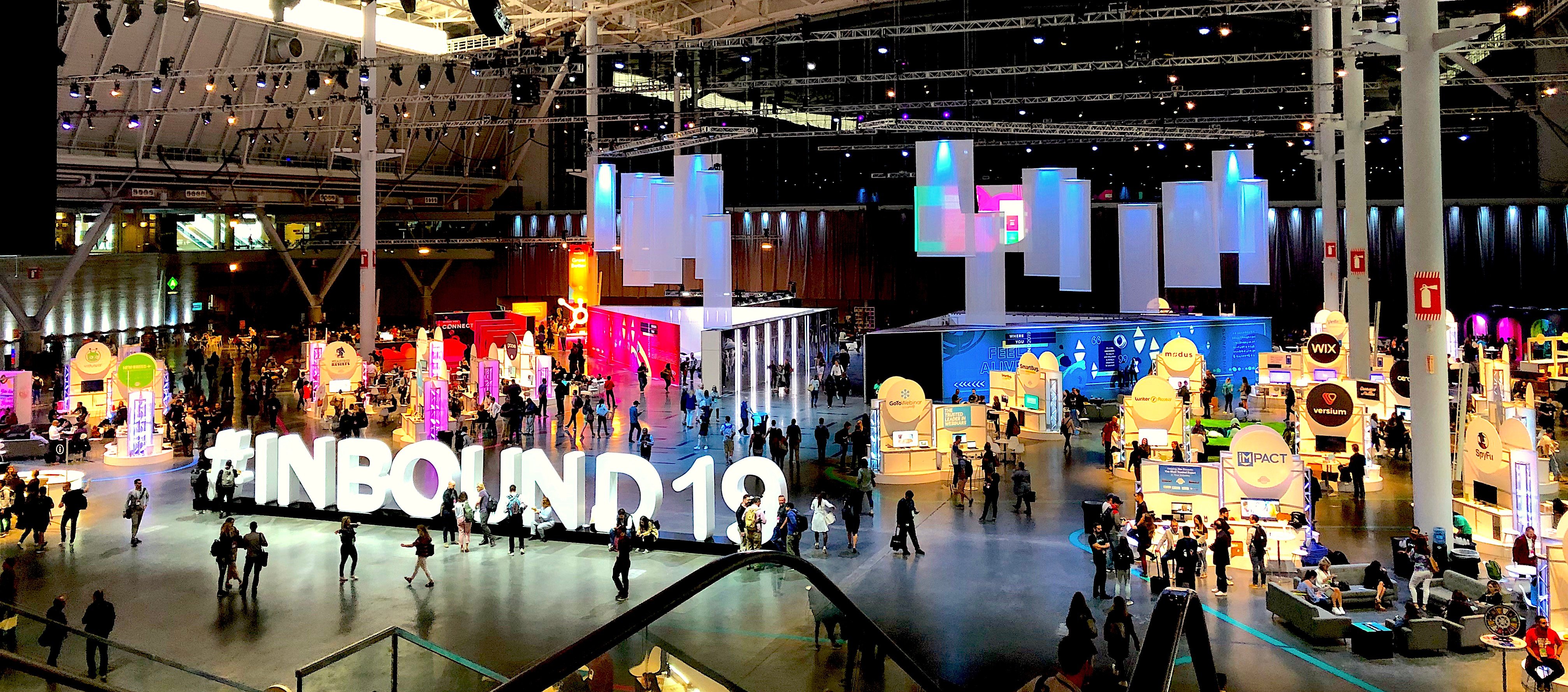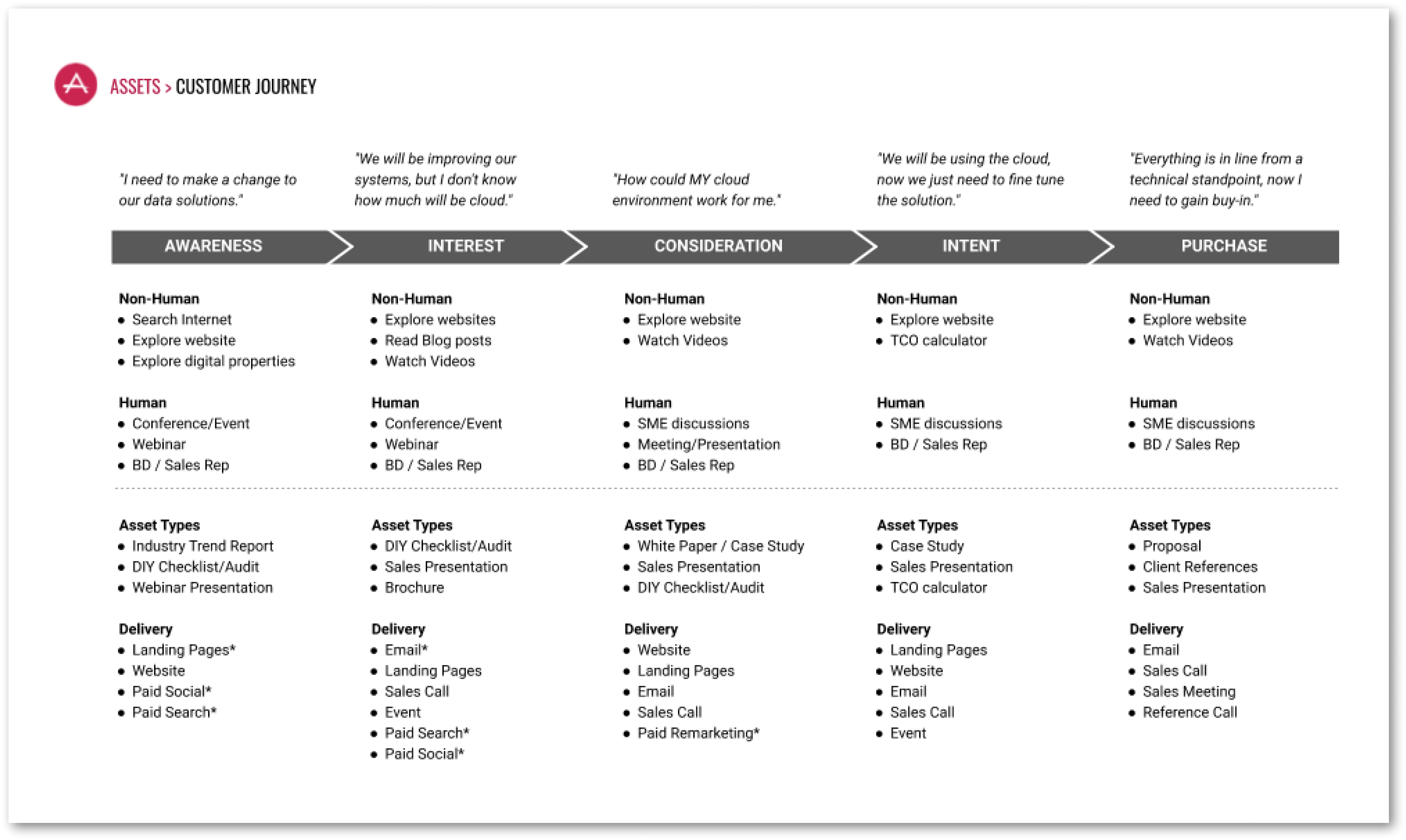
Inbound 19, a leading marketing conference that draws 30,000 marketing and sales professionals from all over the globe just wrapped up in Boston. Honestly, my head is still spinning from everything I learned, but there are five important key takeaways from the conference that I want to share. These tips will help your organization, B2B or B2C, stay focused on your buyers and drive success throughout your funnel (or flywheel).
Buyer experiences that are continuously optimized can transform a brand
At the end of the day, all of the tactical and strategic insights from the sessions don’t mean anything if buyers can’t actually buy. This is especially important for B2B buyers when the buying process or journey can be months or even years long. Brian Halligan, CEO of HubSpot and keynote speaker, mentioned that brands who have transformed the way they sell to deliver frictionless and personalized experiences are beating out incumbents. A great to-do is to sketch out what buying experience you should deliver, and then look at what you actually deliver. If you need a place to start, pick one vertical or product/service and go through that experience from the buyer's perspective.
Here is a handy worksheet to get started.
Marketing automation and personalization are in a constant state of tug-of-war
Delivering personalized experiences is a lot easier in a one to one scenario. But when these experiences need to be delivered at scale, Demand Gen strategies and executions can fall flat without full marketing automation platforms like HubSpot, Marketo, and Pardot. Many are looking to phase out of early-stage platforms like MailChimp and into these more mature and integrated platforms. Buyers expect an immediate response no matter what day or time it is, and to be handed contextually relevant content on the right channel. To automate those personalized experiences start by mapping out the buyer journey. What experience do they want to have, what channels and what information needs to be shared with them and with internal teams? If you are looking to have your marketing be more effective and integrated, scale faster, and do more with less, you need a marketing automation platform that is optimized for you and your buyers.

Email marketing is still king
No matter how many new social channels or ways to advertise emerge, email is still the most widely used B2B marketing channel. While social channels, messaging apps, and other content delivery options like video are becoming part of how we learn and engage with a brand, email is still a core element. Everything should be personalized and tailored for your various segments. If you just send out blast emails with generic or unrelated content to your whole database your performance will be bad, and you will be delivering a terrible experience to your buyers. Streamlining the delivery of those personalized experiences to various segments requires a marketing automation platform. Here is a great post on “Why List Segmentation Matters in Email Marketing”.
- Emails for nurturing leads generate an 8% CTR compared to general emails, which generate just a 3% CTR (source).
- Lead-nurturing emails get 4-10x times the response rate compared to standalone emails (source).
- 42% of organizations believe email is one of their most effective lead generation channels (source).
- Nurtured leads produce a 20% increase in sales opportunities versus other leads (source).
Search engine optimization should probably be called search experience optimization
SEO has gone through some major changes over the past few years with tons of algorithm changes and advances in AI/ML. Google is focusing more and more on what the search experience is for users, and less about “beating the bots” or “gaming the system”. Creating content clusters has been a new way to look at SEO and content creation, but it is now becoming even more relevant. As Google and others, collect more and more personalized data on our search histories, the results are becoming more and more automatically curated based on our past and recent searches. Free tools like Answer the Public and Ubbersuggest are great ways to start getting an idea of what and how your buyers search.
Content context increases engagement more than quantity or quality
Anywhere from 60-70% of B2B content goes unused. Before you go off just creating content, look at what you already have and look at how a potential buyer can even access it. Focus more time and effort on who, where, and how your prospects will engage with your content. Is a content asset buried on your website? Is it just sitting on a server somewhere never to get in the hands of your buyers? Are your sales teams just reusing old content because it has worked in the past? Doing a quick audit of your content and the experience your buyers have can be a good way to find gaps in the content you do have, where you have great pieces that have been underutilized, and how you need to deliver the content to your buyers to actually drive engagement.
Overall, the theme at Inbound was focused on Buyers including; understanding the buyer journey they go through, and how to leverage technology to deliver frictionless, personalized experiences at scale. If you want to know more about the Inbound conference check out the recap here. If you are looking to transform the way your business connects with your buyers and want to know more about anything we mentioned here, let’s chat.





